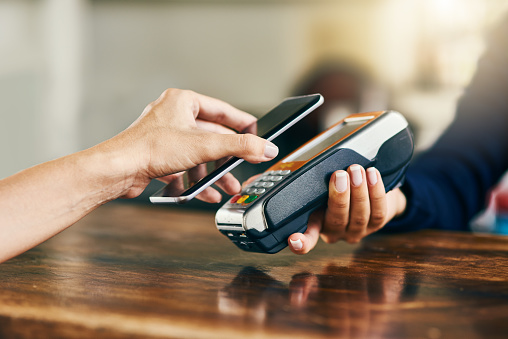What makes a digital payment solution ubiquitous is its ability to offer fast and secure online transactions. Whether it’s an online or brick-and-mortar, the digital payment solution can help your business make the most of the e-commerce landscape. As we live in the age of smartphones, the development of a mobile wallet app can boost your business by providing your customers with more convenience when paying online.
Worldwide sales of the digital payment solution are expected to reach $14 trillion by 2022. Software giants such as Apple and search giant Google have begun to realize the potential of wallet apps by launching Apple Pay and Google Pay, respectively. WhatsApp, too, has recognized the importance of a digital payment solution and is enthusiastically working on its mobile wallet app.
Why Mobile Wallet App Development?
Wallet/e-wallet apps are not only useful for e-commerce and retail. Nowadays, the BFSI, grocery, transportation, logistics, and telecommunications sectors have also become major beneficiaries of wallet apps.
Many companies are either in the process of launching a dedicated wallet app or have already launched the app. The main goal of developing a wallet app is to provide customers with a wide range of services related to online payment in a secure manner.
Be it booking tickets that pay bills, or transferring money, the wallet app makes every task easier. However, it is fair to say that the wallet app cannot attract customers with poor security and fluid features.

Here are 6 tips to consider when developing a robust and secure mobile wallet app.
Top tips for developing secure and powerful mobile wallet apps
- Research and find the type – The first and most important step is researching your audience. It is very important to know their hopes and market trends from the Wallet App. You can define the method of payment using the following common methods:
- Mobile P2P transfer – Customers can transfer money to their counterparts “accounts via mobile
- PoS (Point of Sale) – Customers can pay online using a mobile phone in a brick-and-mortar store
- Online Payment– Customers can pay online securely using their credit/debit cards and UPI
- Wearable Device Support – A future-proof and feature-rich mobile wallet app should support wearables such as Apple Watch and Android wearable devices. We can assume that the future belongs to wearables, so, if you want to develop a powerful app that is ready for the future, it should support wearables.
- Near Field Communication technology – The mobile wallet app should be compatible with NFC technology. NFC technology is a modern, contactless payment technology with a range of 10 cm. The digital payment solution includes the NFC-based payment option, which allows customers to pay securely at the POS device with their smartphone.

After taking a look at the most important features that will be included in the wallet app, we will go through some of the key features that ensure its security: the most important ones are the QR code and the end-to-end encryption.
- QR Code – A QR code is a two-dimensional barcode that contains the necessary information about the product to which it is connected. QR codes can encrypt data by developing code and adding a picture of the code on the receipt. It ensures that the customer receives a QR code on the screen of his smartphone for payment. It also secures the payment process because it is fully operated and readable by machines.
The QR code used four standard encoding modes – numeric, alphanumeric, binary, and kanji – to store the data efficiently.
- End-to-end encryption – It is one of the most effective and secure techniques for online transactions with a mobile wallet app. This feature allows the customized wallet app to encrypt data as soon as the user begins to use his phone for payment to the authorization page. Simply put, end-to-end encryption is intended to encrypt data from payment initiation to authorization. Messaging apps such as WhatsApp and Viber use this technique to protect messages or communications.
Historically, this method has been the preferred method of protecting sensitive data related to cards and payments. Huge databases with card numbers are secured with encryption keys.
- Tokenization and Password – Tokenization is a modern technology to ensure safe payment. What makes it a reliable and effective technique is the fact that the seller or a third party can never know the card details of the purchaser. The purchaser’s card details remain encrypted during payment and instead the random number is generated by encryption.
The password is the most common and first level of security technology. If a password is too weak or easily predictable, it is automatically rejected by the wallet app at the time of sign up. It not only ensures that the authorized person is using the app but also protects sensitive user data from fraudsters.
In addition to these methods to increase the security of the wallet app, it is imperative to use methods such as the proper handling of meetings, the security of the transport layer and the like. Finally, you need to develop a simple app that the common man can easily understand and use for online transactions. It is better to consult a company for the development of mobile apps to develop a successful digital payment solution in the form of a powerful mobile wallet app.


